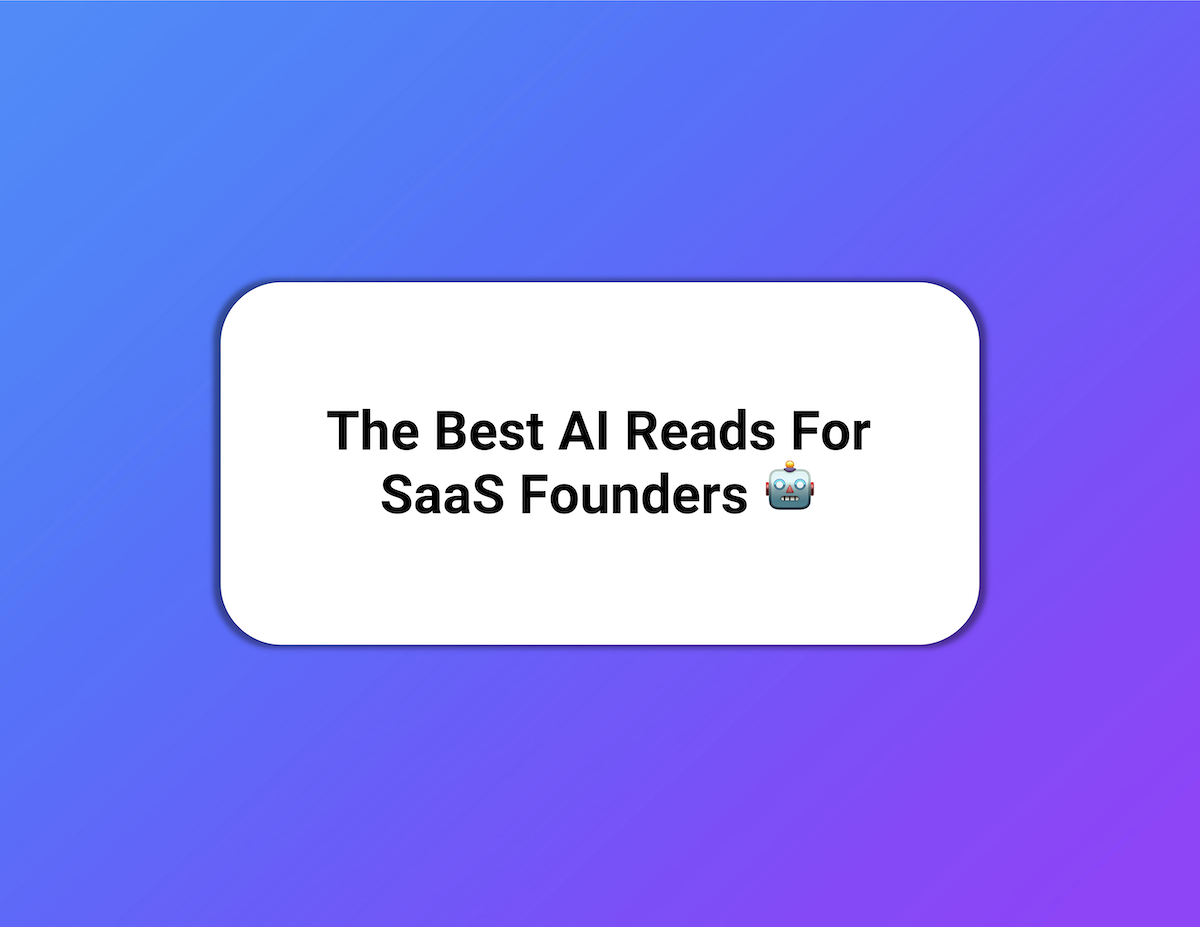Introduction
How can SaaS founders navigate an AI strategy?
This question seems to be top of mind for founders nowadays.
More and more B2B SaaS companies are launching generative AI capabilities (we have been tracking them here), and the SaaS Weekly community has been seeking insights from our Chatbot.
As a wave of new generative AI products enter the market, having an AI strategy seems to be now table stakes.
But where to start? Understanding the nuances of AI implementation within your organization is key. It could be identifying low-risk, high-potential problems as a starting point or structuring a dedicated AI team.
To help you put pen to paper when crafting your own strategy, we’ve curated an essential reading list that offers both insights and direction.
Let’s get right to it!
The Best AI Reads for SaaS Founders
The AI landscape is ripe with opportunities for growth and innovation, and Intercom’s story is a great case study.
Here are three key takeaways from the company’s journey.
- Tackle a low-risk, high-potential problem with AI first. This approach allows room for learning and error while still offering significant upside.
- Build a centralized AI squad. Not everyone needs to be an AI expert, but a focused team can guide your AI initiatives.
- Embrace language as the new UI. Consider how incorporating text and voice into your SaaS interface can simplify user interactions and widen your user base.
Article by: Ethan Kurzweil and the Bessemer Venture Partners team
As the AI ecosystem continues to expand, CEOs need to balance leveraging the benefits of AI and managing risk concerns.
Here are a few key highlights.
- Prepare your organization to implement AI efficiency. Identify your company’s prioritized use cases and start upskilling your existing workforce.
- Have a risk management strategy in place to handle inaccuracies. Dedicate resources to address accuracy and risk management concerns, regardless of the use case.
- Avoid getting stuck in the planning stages with rapid proof of concepts. Companies can continue to build momentum with AI strategies by focusing on quick wins and meaningful results.
Article by: McKinsey
Despite the rapid growth of the generative AI market, there still doesn’t seem to be a winner-take-all dynamic. From startups to incumbents, all layers of the AI stack has opportunities for value creation.
Here’s the breakdown of the AI Layer:
- Applications – User-facing software, built on third-party APIs. Generative AI apps have seen widespread adoption due to their versatile use cases. However, retention and differentiation are significant challenges, with apps often lacking strong technical uniqueness.
- Model – Proprietary models that power apps API or as open-source. The commercialization of these AI looks to be through hosting services. The demand for proprietary APIs, such as those from OpenAI, is escalating quickly, but hosting services for open-source models (e.g., Hugging Face and Replicate) are also on the rise.
- Infrastructure – Cloud vendors and hardware manufacturers. Infrastructure vendors, especially those offering GPU technologies (like Nividia), are the backbone of the generative AI landscape. Almost all operations in generative AI, from training to inference, involve cloud-hosted GPUs or TPUs, making them the linchpin of this technology
Article by: Matt Bornstein, Guido Appenzeller, and Martin Casado at
A16Z
BigTech giants and high-growth cloud players are moving quickly to enter the generative AI race.
Amidst the recent surge in press releases of new AI products entering the market, there is still a ton of room for new startups to innovate and thrive.
Here’s a rundown of the AI landscape:
- BigTech – the Goliaths on the playing field. The major strengths of BigTech are their massive distribution networks and entrenched user base. However, they’re caught in an Innovator’s Dilemma choosing between cannibalizing existing products for a disruptive new technology.
- AI-Enhanced Scalers – the high-growth SaaS workflows. These companies rely on their brand recognition and product love. But their biggest challenge is integrating AI features into existing workflows, which may result in compatibility issues and increased development time and cost, all while they pursue profitability.
- AI-Native Startups – the ‘Rocky’ in the ring. These contenders have the potential to reimage underserved verticals and explore novel use cases. But they face significant challenges in areas requiring high capital expenditure, like building and training LLMs.
Article by: Vivek Ramaswami and Sabrina Wu at
Madrona
Despite AI’s rapid development, it still has limitations when it comes to B2B applications, particularly concerning the accuracy, outcome orientation, and context-specific depth.
However, there’s an opportunity to enhance its capabilities by combining it with human intervention and your company’s proprietary, context-specific data.
- Understand the limitations of Generative AI in B2B applications. Acknowledging these limitations can help in developing strategies that make the most out of AI while addressing its shortcomings.
- Leverage a combined approach of AI and human intervention. By integrating proprietary, context-specific data from your company, and involving human influence, you can augment AI’s capabilities and tailor its solutions to better fit with your specific business needs.
- Explore using Small Specific Language Models. Consider using or developing SSLMs that can leverage proprietary data, offering a balance of broad understanding and context-specific insights.
Article by: Gordon Ritter and Jake Saper Emergence Capital
Looking for more of the best SaaS reads?
Subscribe below to stay up-to-date with content from thought leaders in the industry. Every Friday, we curate seven of the best guides, gurus, and growth stories right in your inbox.







